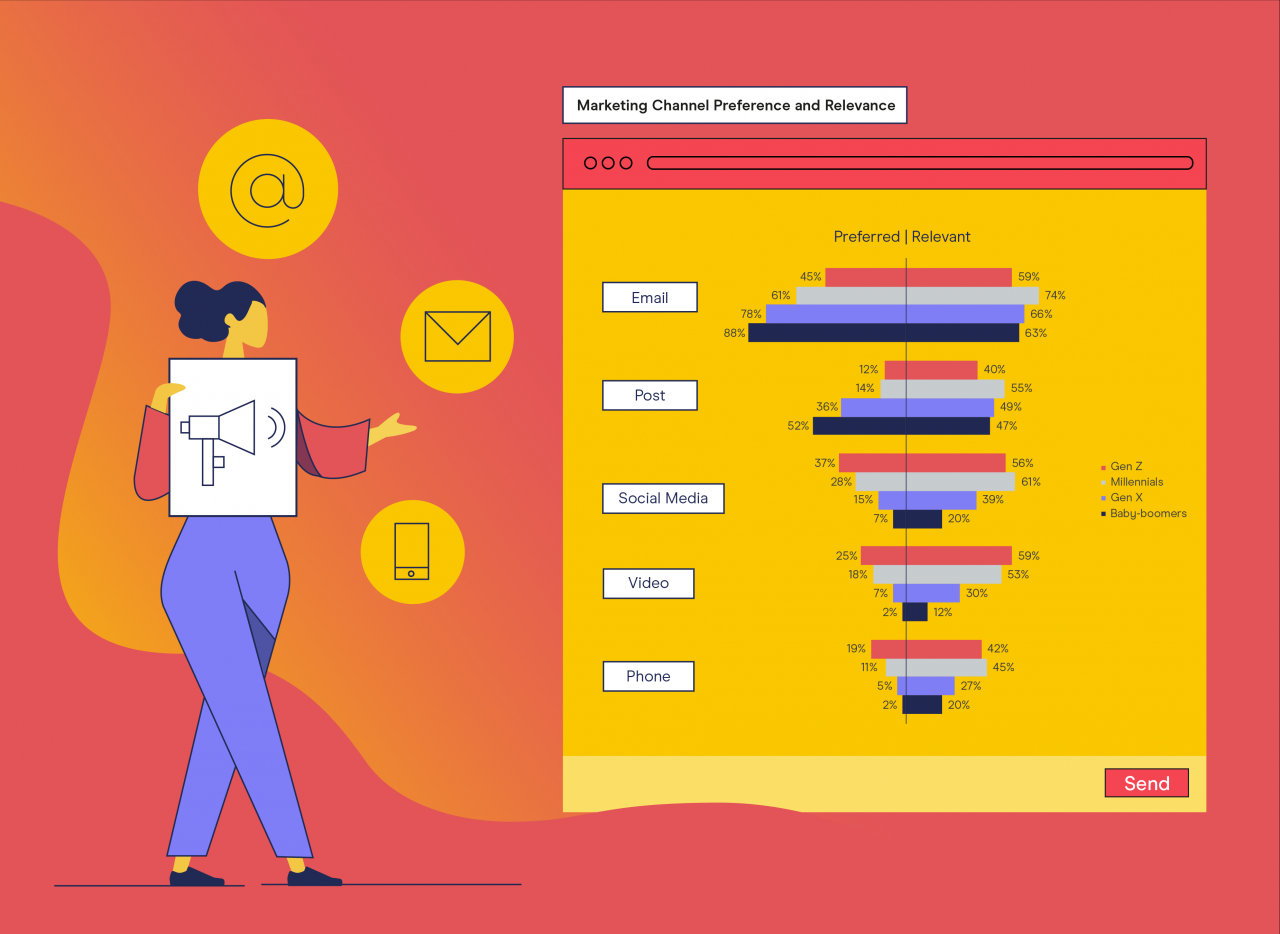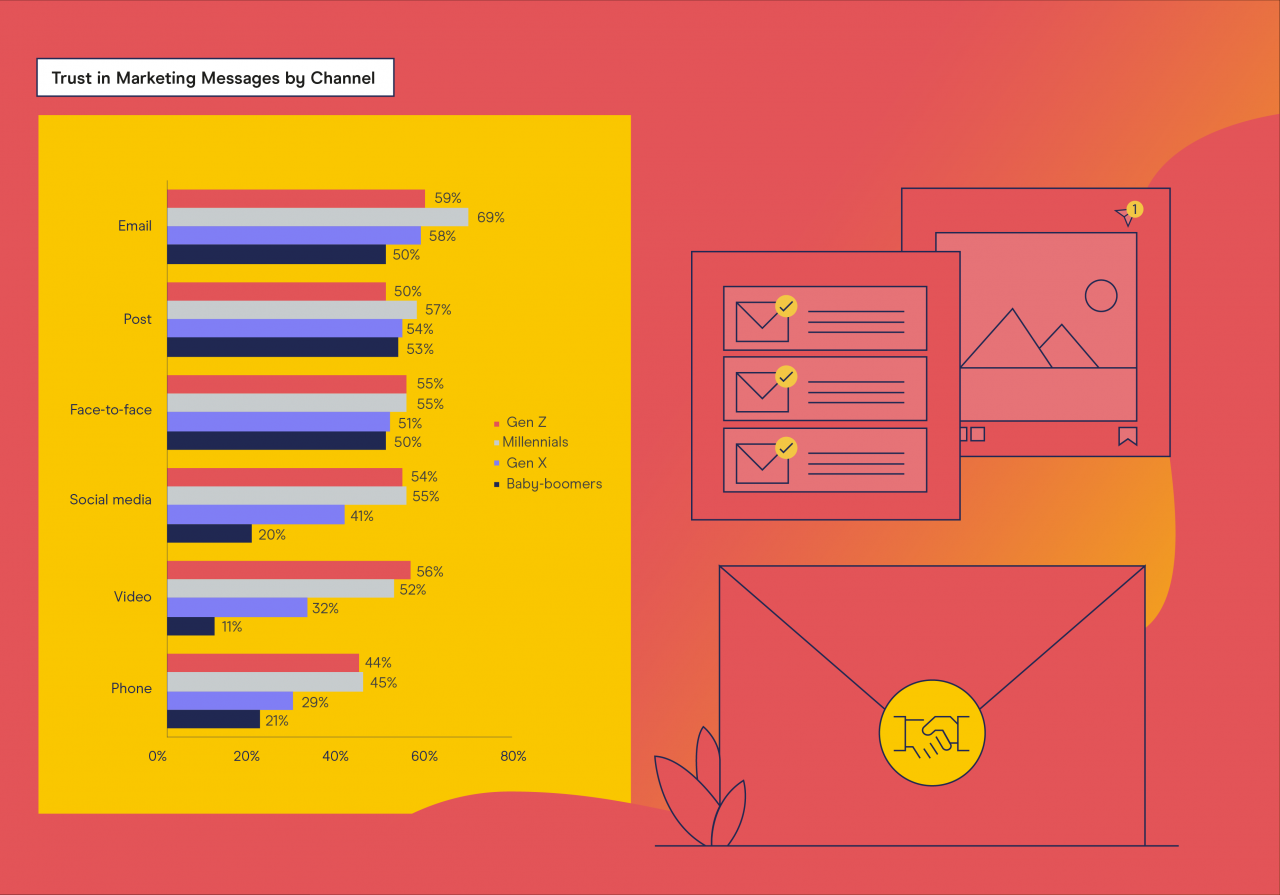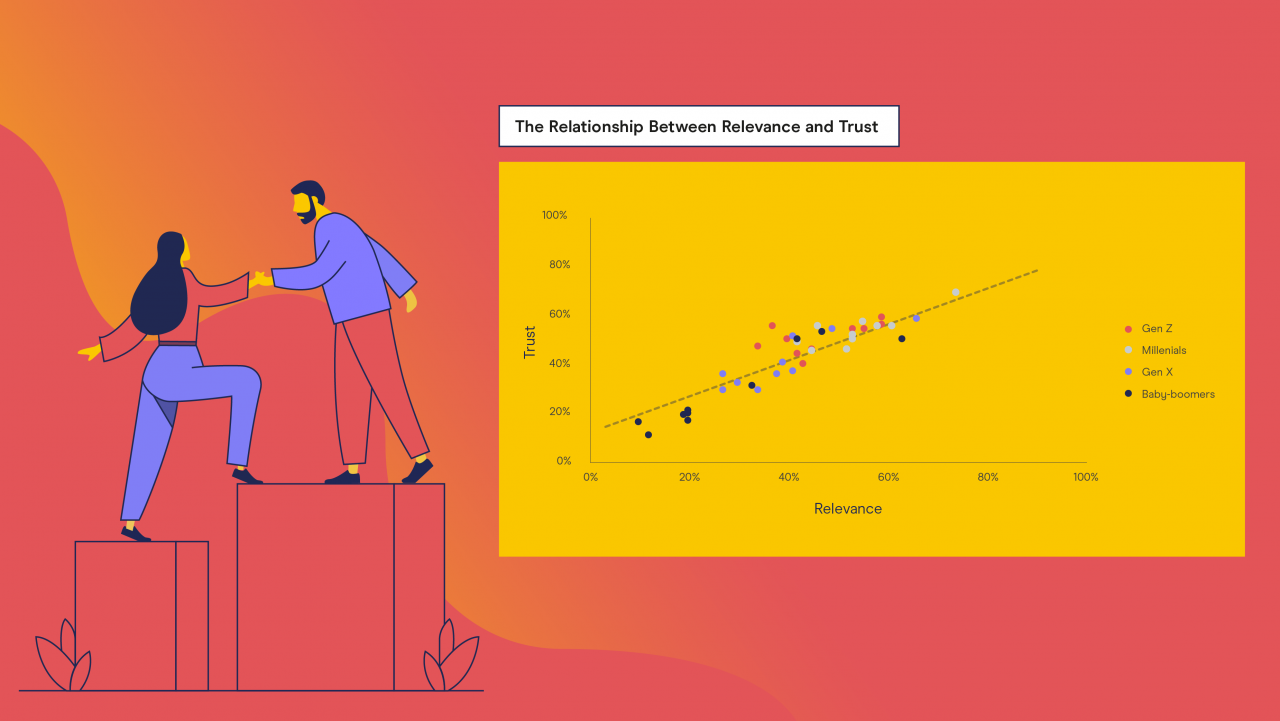DMA Insight: Channel Challenges Between Generations
25 Jan 2021

The most recent ‘Customer Engagement: How to win Trust and Loyalty’ report, sponsored by Collinson and dotdigital, investigated the channels chosen by brands to engage their customers. Looking at these figures through the prism of generations reveals both differences and similarities brands should be aware of when contacting customers.
Read on to find out the key differences in how customers prefer to receive marketing, which channels they find the most relevant, which ones they trust, and why.
Do preference and relevance align?
Email is, by far, the most popular channel to receive marketing messages from brands for all age groups – with 73% of consumers ranking it in their top two preferences.
However, there is a marked difference in this generationally. While email is the channel preferred most by Gen Z (45%), it is far less pronounced in comparison to other age groups. This figure may be influenced by a preference to receive brand content through other channels like social media (37%), video (25%), and even phone calls (19%).
Meanwhile, at the other end of the generational spectrum, ‘Baby-boomers’ prefer email (88%) and mail (52%) significantly more. This older group of consumers are also significantly less likely to find the marketing messages they receive through many of the channels asked about as ‘relevant’ – with just email (63%) on a par with other generations.
Interestingly, it is Millennials that are more likely to find marketing messages relevant more often across the channels asked about within this survey – equally as relevant as other generations or more so for every one of the channels. Unsurprisingly, Gen Z is more likely to report messages received via social media (56%) and video (59%) as relevant.

Is trust a more accurate preference driver?
In addition to relevance, the latest survey asked consumers about their level of trust in the marketing messages they receive via various channels.
Once again Millennials appear to be the most willing to trust marketing messages, having significantly higher or at least equal levels of confidence in all the channels asked about.
Equally, Baby-boomers appear to be less trusting across almost all channels, except messages received by mail (53%) or in face-to-face interactions (50%) – the latter is something all generations appear to have a high level of trust with. Meanwhile, Gen Z’s high trust in messages received by phone (44%) and video (56%) appears to go some way to explaining why these channels are significantly more preferred by this generational cohort.

Relevance = Trust?
There appears to be a connection between generational channel preferences and the relative relevance or trust customers have in the messages they receive from brands. But does this translate to a relationship between relevance and trust?
By plotting the relative relevance and trust for each channel by generation, we can see that there is a clear relationship between the two. Meaning that as the relevance of a channel increases, seemingly so does the trust a customer has in it – and vice versa.
While we can’t be sure of the cause and which factor is driving which, the connection to channel preference surely makes a virtuous cycle whatever the direction of travel. It is, therefore, important that brands are aware of the benefits of building trust in marketing communications, as this may well help to drive relevance and preference.

Building Future Trust
In order to increase trust in marketing messages, specifically those from brands that consumers already use or might be aware of, there are remarkable similarities in many areas. All generations agree that referrals from friends or family (34%), customer review or testimonials (34%), and independent ratings (29%) help to build trust.
However, when it comes to brand reputation there is a marked decrease in Gen Z feeling this is important (25%). Similarly, Gen Z (19%) don’t feel simple to understand information is as important as Baby-boomers do (39%).
Baby-boomers also believe being addressed personally (33%) helps them to feel they can trust the brand and its marketing. Meanwhile, it’s Gen Z that are driving the growth in online influencer/vlogger (17%) and celebrity endorsement (12%) as they claim these help them trust brands.

While email still leads the way across generations, beyond this central channel there is a myriad of ways brands could engage customers.
The differences between the generations also highlight key shifts that brands should be aware of when planning their marketing campaigns. This analysis also highlights the potentially virtuous cycle of improving customers’ perception of trust, for example, on the preference and relevance for each channel.
Discover more details on these and other insights in our full report and its dedicated webinar.